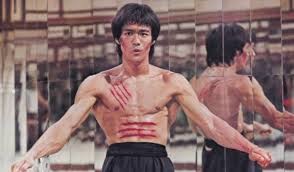Bruce Lee wasn’t just a martial artist. He was a movement. A philosopher in motion. A global icon whose fists hit harder than gravity and whose ideas hit even harder. While most remember him for his lightning-fast kicks and electrifying presence on screen, Bruce Lee’s influence runs much deeper shaping martial arts, fitness culture, cinematic storytelling, and even the psychology of peak performance.
Born to Break Barriers
Born in San Francisco in 1940 and raised in Hong Kong, Bruce Lee was a child actor before he became a martial artist. But it wasn’t until he moved to the U.S. in his late teens that his legend truly began. Frustrated by the rigidity of traditional martial arts and the limitations imposed by cultural expectations, Lee began to forge his own path not just in combat, but in mindset.
He famously said, “Absorb what is useful, discard what is not, add what is uniquely your own.” That philosophy would become the core of his martial art system, Jeet Kune Do a hybrid style that emphasized efficiency, fluidity, and adaptability. It was more than a fighting style; it was a way of life.
Redefining Martial Arts Forever
Before Bruce Lee, martial arts were often practiced within strict traditional frameworks. Forms were rigid, and styles rarely mixed. Lee broke those molds. He trained in multiple disciplines Wing Chun, boxing, fencing, wrestling and fused them into a personal, evolving system. In doing so, he became the godfather of modern mixed martial arts (MMA) before the term even existed.
He emphasized real-world application over ritual, reaction over rehearsed movement. His approach influenced not just martial artists, but fighters in boxing, MMA, and self-defense communities around the world. UFC President Dana White has even called Bruce Lee “the father of MMA.”
The First Asian Global Sports Icon
In the 1960s and ’70s, Asian representation in Western media was minimal and often steeped in stereotypes. Bruce Lee shattered that glass ceiling with raw charisma, authenticity, and unstoppable skill. Films like Enter the Dragon and The Way of the Dragon showcased not only his mastery of martial arts, but also his deep intellect and spiritual discipline.
He didn’t just open doors for Asian actors he kicked them off their hinges. He showed the world that strength, elegance, and power could look different from the Western norm, influencing generations of athletes, actors, and creators.
The Blueprint of the Modern Athlete
Bruce Lee was decades ahead of his time when it came to fitness and athleticism. His training regimens included strength training, cardiovascular conditioning, flexibility, speed drills, and even neuromuscular coordination long before this type of cross-training became mainstream.
He treated his body like a weapon, sharpening every edge. He used resistance training, isometrics, early versions of interval training, and even designed his own equipment. His notebooks show detailed knowledge of kinesiology, nutrition, and biomechanics.
In essence, Bruce Lee was one of the first true hybrid athletes the kind we now see in elite-level sports around the world.
A Legacy of Mind and Movement
Bruce Lee died tragically young at just 32 in 1973, but his legacy continues to ripple across time. His writings on discipline, self-actualization, and individuality are quoted by athletes, entrepreneurs, and thinkers alike. His emphasis on adaptability, self-expression, and fearlessness speaks to anyone striving for greatness in sport or in life.
“Be water, my friend,” he once said. It wasn’t just about fighting it was about becoming limitless.
The Dragon’s Eternal Flame
Bruce Lee wasn’t just a martial artist, actor, or philosopher. He was a cultural hurricane one that redefined the boundaries of what a person could be. He proved that mastery isn’t about tradition or titles it’s about evolution. About constantly breaking your own limits.
In the world of sports, Bruce Lee didn’t just change the game he rewrote the rules entirely.

